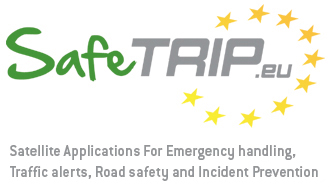Introduction
Interface Design for Drivers
Collaborative Road Alert Service (CRA)
Interaction Design for Passengers
Information Exploration UI
Driving Simulator - A Study tool
Service Designs and Trial Results
SafeTRIP Info Explorer
Interaction Design for Passengers
While in-vehicle services and applications for drivers and passengers have been around for over a decade, the last few years has seen an impressive growth in this area due to advances in portable devices and mobile communication. The most popular service is personal navigation support, which over the years has grown to include information beyond map and route – information about traffic, points of interest, hotels, petrol stations, restaurants, weather, etc. While the availability of such information is useful for drivers and passengers, they are integrated with the navigation application on devices with relatively small screens. It makes both information search and access to rich detail difficult and dangerous - if operated by the driver on the move. In addition, it disrupts the use of the device as a navigation tool. Indeed, it is becoming more and more common, for applications running on nomadic devices (e.g. tablets, smartphones) to be used in the vehicle for this purpose, however in general these are not designed for in-car usage – and therefore suffer from limitations (for instance, long textual presentation of information which is difficult to read on the move).
A survey with drivers in the context of the SafeTRIP project revealed that there is need for 1) content - information with rich level of details (including embedded multimedia) 2) better search mechanism – as current text-based searches are seen as limiting. It also emerged that for practical and safety reasons, many drivers delegate the task of searching and information access to a passenger or use the device to search when the vehicle is parked.
Through the use of tablets it is possible to address the unmet needs of drivers.

SAFETRIP.eu is a project co-funded by the European Commission, DG Research
© Copyright 2012 SafeTRIP


